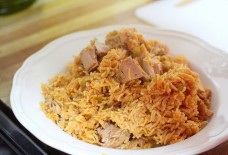Not All Arabs Are Muslims and Not All Muslims Are Arabs
Racial, ethnic, and religious profiling is still far too common in the U.S.By: Noah Robertson/Arab America Contributing Writer
If I were to walk up to a random person on the street in the U.S. and ask them if the majority of Arab Americans are Muslim, or if the majority of American Muslims are Arabs, at least 50% of the time I would be told yes to one or both of those questions. Polling in 2014 from the Arab American Institute showed that all groups polled believed most Arab Americans to be Muslims, and many people believed all American Muslims to be Arab. This common confusion is problematic and needs to be addressed.
Polling from the Arab American InstituteWho Are Arabs?
The definition of an Arab is simple: Arab is an ethnolinguistic category, identifying people who speak the Arabic language as their mother tongue. It is important to note that some people will not identify as Arabs, such as some Lebanese people who identify as Phoenicians or others who draw their ethnic heritage to different sources. While an important distinction for some, it still would be accurate to call someone of Lebanese descent an Arab. The Arab World consists of 22 different countries where Arabic is the official language, but there are many different dialects of Arabic that differ widely.
The Arab World through their flagsArab Americans are simply Arabs who live in the U.S. Even if they do not speak Arabic as their native language, if their parents or grandparents did, or even for many who can draw their lineage to Arab countries, they are Arab Americans. For some who have Arab heritage through someone such as a great-great-grandparent, they may or may not choose to identify as an Arab American.
Who Are Muslims?
The definition of Muslims is also simple: It’s a religious category, identifying those who practice Islam. One can be extremely devout or follow only parts of Islam, but either way, they still identify as Muslim. Given the variation in how closely one follows the five pillars of Islam, it could be said that being Muslim is not just a religious identity, but also a cultural/heritage identity. Muslims are not a monolith. The majority of Muslims live in the Asia-Pacific region (61.7%) and about 1/5 of the world, or ~1.6 billion people, are estimated to be Muslim.
Data from The Pew Research Center on Muslims across the worldAmerican Muslims (Muslim American is an incorrect term to use) are those followers of Islam living in the U.S. They may have immigrated here, were born here, or simply chose Islam as their preferred religion. Many people also assume all Muslims wear hijabs, niqabs, turbans, keffiyehs, or other religious covering, but this is a personal choice and many practicing Muslims do not wear these often, or at all. In fact, other religions also wear turbans or other head coverings, so this is an inaccurate assumption to make.
Why Do People Confuse Arabs and Muslims So Often?
For many people their knowledge of the Middle East is limited, so to them, anyone speaking Arabic and practicing Islam comes from the Middle East and is both Arab and Muslim. The blame for this lack of knowledge and improper terminology can be traced to our education systems, the media, and the public figure’s rhetoric.
In U.S. classrooms not only do teachers rarely go into depth about the Middle East but they, along with the media, also use the term Arab and Muslim interchangeably to describe people from the region. Not only does this form problematic habits, but there are simple numbers and definitions they could share to ensure people know the difference. According to the Arab American Institute less than 1/3 of Arab Americans are Muslim (a majority of them are Christian), and less than 1/4 of American Muslims are Arab. In addition to this, only ~20% of Muslims actually live in the Middle East. Along with this it would be important to inform students that Muslims do use Arabic for their prayers because the Quran is written in Arabic, but that does not necessarily mean they speak Arabic or are Arabs. If teachers and the media referenced these simple facts and defined who Arabs and Muslims are more clearly, people would be a lot less confused.
Children’s perceptions and word choice are very easily influenced at a young ageAlong with teachers, if politicians made sure to choose their words carefully in speeches and public comments it would help as well. Simply hearing terms used interchangeably so often is problematic and creates lasting habits for the general public. Many people have a lot of trust and reliance on public figures, so what they say really does matter.
How Do We Change This Misuse of Terminology?
In order to make these changes, we need to commit to using the proper language and educating the general public more truthfully. This does require effort because most of us have been conditioned to use the terms interchangeably, which is why committing to using Arab and Muslim or Arab American and American Muslim in the proper way is so important. With simple changes in education, media portrayals, and the language of public figures a lot of people can be reached and language and perceptions can be bettered.
Check out Arab America’s blog for any more articles!
Sources:
https://b.3cdn.net/aai/3e05a493869e6b44b0_76m6iyjon.pd f
https://teachmideast.org/articles/arab-middle-eastern-and-muslim-whats-the-differenc e/
https://www.encyclopedia.com/social-sciences-and-law/anthropology-and-archaeology/people/arabs









